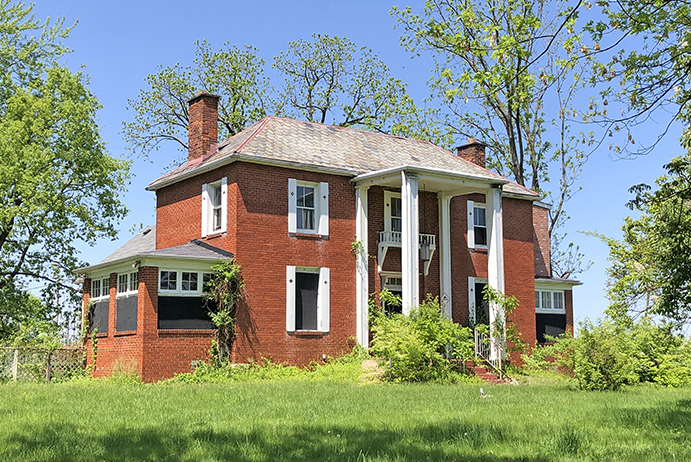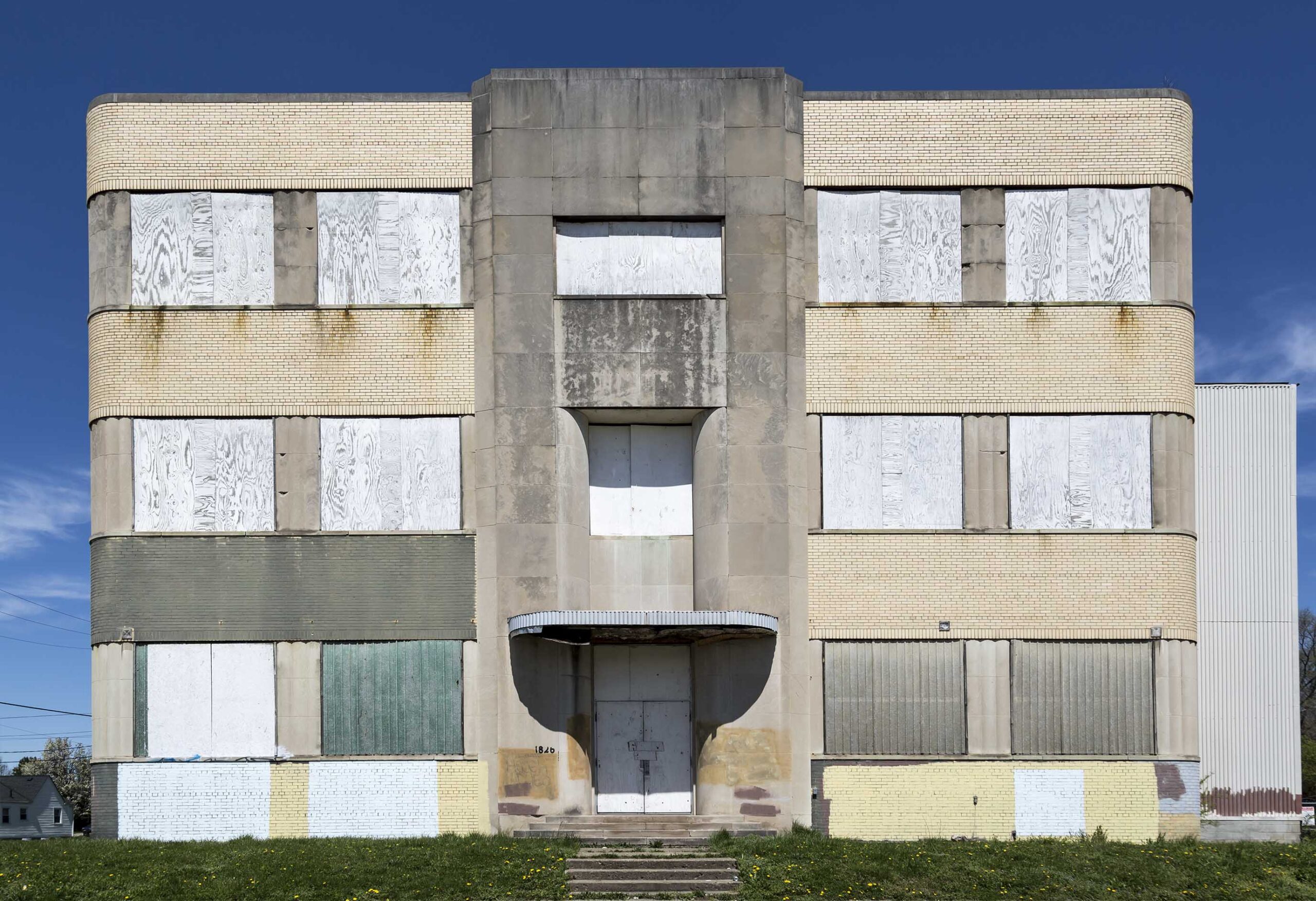Columbus Landmarks Publication
The annual list of Most Endangered Sites
to create awareness and stimulate redevelopment of historic properties.
This list represents an immediate opportunity to achieve our vision for Columbus: a thriving, creative city that values and protects its architectural and cultural legacy and is committed to equity, sustainable growth, and design excellence.
2015 Endangered Buildings List
-
Columbus Railway Power & Light Company
-
The Main Bar
-
Parsons Engine House no. 14
-
East Pilgrim Elementary School
-
Salzgaber Farmhouse
-
Original Port Columbus Terminal
-
Trott & Bean Architects, Inc.
-
Indianola Junior High School
-
Kessler’s Corner Grocery
-
Holy Rosary Roman Catholic High School
-
Bellows School
-
Elam Drake Farm & House
-
Franklin Park Medical Center
Save Historic Sites
2015 Most Endangered Building
Columbus Railway Power & Light Company
838 Cleveland Ave, Columbus, OH 43201 (Devon Triangle)
1915
OHI No. FRA-841-14 (1975)
010-066573-00
Columbus Railway Power and Light Company Building was built in 1915, just as the neighborhood of Milo Grogan was being incorporated into the City of Columbus. Located at the intersection that once was the location of the Columbus Central Street Railway Car Depot and Power House, the remaining building is a two-story brick structure with steep hipped roof, an octagonal tower, and round-arched windows. Privately owned, the building never fails to attract attention to those who wonder why it has not been restored.
2015 Most Endangered Building
The Main Bar
16 W Main St, Columbus, OH 43215 (Downtown)
c. 1890
010-039132-00
The Main Bar is the last surviving late 19th century commercial structure on West Main between S. High and Wall Street. Originally flanked by two similar structures, the building has been used as both a residential and commercial structure, but was listed as the “Hare and Corbin” saloon in 1890. The building has an uncertain future due to a disputed 1836 lease and potential future development on the site.
2015 Most Endangered Building
Parsons Engine House no. 14
1716 S Parsons Ave, Columbus, OH 43207 (Reeb-Hosack)
1906
010-066800-00
Engine House #14 is one of many historic firehouses that remain in Columbus. A number of them have been rehabilitated, restored, or readapted. This 19th century firehouse is currently for sale by the City of Columbus and is located on a very visible gateway site near Merion Village and Hungarian Village, both of which are experiencing renewed residential and commercial interest.
2015 Most Endangered Building
East Pilgrim Elementary School
440 Taylor Ave, Columbus, OH 43203 (King-Lincoln Bronzeville)
1921
OHI No. FRA-8656-19 (2002)
010-066727-00
Built to alleviate overcrowding at other schools and to accommodate growing number of children on Columbus’s east side, the building opened in November of 1921. It was named the “Pilgrim” school by the Columbus Board of Education to honor the tri-centennial of the Pilgrims’ landing. An Ohio Historical Marker notes the cooperative and community-minded nature of the school and active participation of working class parents. The building could see a second life due to its location in a residential neighborhood that is part of the East PACT planning area.
2015 Most Endangered Building
Salzgaber Farmhouse
1192 Grandview Ave, Columbus, OH 43212 (Grandview Heights)
1904
030-001383-00
The turn of the century farmhouse is one of the original homes in the Grandview/Marble Cliff area. The Salzgaber family’s produce farm, farmed by three generations of the Salzgaber family, was located on the east side of Grandview Avenue. The family sold their yields at the North Market, Central Market and a local farmer’s market on Grandview Avenue. The farmhouse and surrounding land was sold in 1916. The home is threatened by potential commercial and residential development, though a recent proposal for condo development was rejected.
2015 Most Endangered Building
Original Port Columbus Terminal
4920 E Fifth Ave, Columbus, OH 43219 (Port Columbus)
1929
010-096157-00
The Original Port Columbus Airport Control Tower was built in 1920 by Allied Architects Association, a consortium of architects best known for their work to create a classical civic center after the 1913 flood. The octagonal control tower and two-story building marked the transfer point of New York passengers by railroad to the Transcontinental Air Transport Ford Tri-Motors to Waynoka, Oklahoma where they boarded another overnight train in New Mexico for a TAT flight to Los Angeles. The entire coast-to-coast trip took only 48 hours, and the inauguration of air service in Columbus was marked on July 8, 1929, with the appearance of noted aviators Charles Lindbergh, Amelia Earhart, and Henry Ford. Captain Eddie Rickenbacker arrived the next day. The survival of such an early air facility is extraordinarily rare. The building is owned by the Columbus Regional Airport Authority and is unused.
2015 Most Endangered Building
Trott & Bean Architects, Inc.
77 Nationwide Blvd, Columbus, OH 43215 (Downtown)
1910
OHI No. FRA-9548-18 (1988)
010-022765-00
Winner of the First Annual James B. Recchie Design Award and an award from the Architects Society of Ohio, the former plating and silvering plant was located on Naghten Street, an area now on Nationwide Boulevard. Vaudvillities used the building for rehearsal, stage and set construction until 1979 before attempts to turn it into a retail center failed. It was purchased by Continental Development and Trott & Bean Architects, Inc. as a joint venture and renovated and restored for private office space and conference facilities. The building is threatened with demolition for the development of a new hotel on the site.
2015 Most Endangered Building
420 E 19th Ave, Columbus, OH 43201 (University District)
1929
010-027433-00
Indianola Junior High School was the first school in the United States that was built specifically to be used as a junior high school. The present school was constructed in 1929. The junior high idea was developed by superintendent of schools Jacob Shawan and OSU president Dr. William Oxley Thompson. The school was designed by Howard Dwight Smith, who would achieve recognition as the architect of the Ohio Stadium. Built to model a high school, Indianola boasted industrial arts and home economics classrooms, a model apartment for decorating by students, a wood paneled library with working fireplace, and outside terra cotta tiles and stone carvings of bison and woodland animals and a relief of Chief Logan (Tah-ga-jute) done by Dr. Frey (OSU arts faculty and creator of Dr. Thompson’s statue in front of the Main Library). The school is built on the former Indianola Amusement Park. It is listed on both the City of Columbus Historic Register and the National Register. As of 2025, it is the home of Metro High School (now The Metro Schools), a school started by then-OSU President Karen Holbrook.
Original Endangerment Description
Back in 2015, the building was noted as being “vacant, mothballed and deteriorating” and was listed on our Most Endangered Sites listing for the year; it now has a second lease on life serving the University District as a high school.
2015 Most Endangered Building
Kessler’s Corner Grocery
553-555 W Town St, Columbus, OH 43215 (Franklinton)
1884
OHI No. 24 FRA-249-16 (1975) | FRA-249-16 (1988) | FRA-249-16 (1994)
010-007308-00
Built in 1884, this building was one of 4 masonry structures that withstood the 1913 flood in Franklinton. The structure has operated as a grocery, shoemaker’s shop, hardware store, bar, grill, etc. The building has been empty for several years, but is located in an area poised for redevelopment.
2015 Most Endangered Building
Holy Rosary Roman Catholic High School
1667 E Main St, Columbus 43205 (Driving Park)
c. 1930
010-062140-00
The Holy Rosary High School building, opened in 1928, was used until well into the 1960s when the Holy Rosary Parish was merged to help form the Community of Holy Rosary and St. John the Evangelist. The school was built in the Northern Italianate style and was designed to complement the nearby Holy Rosary Church. Both incorporate distinctive clay tile insets into the exterior décor of the brick buildings. Other structures on the site include an elementary school and a convent. The high school is boarded up and shows some signs of deterioration.
2015 Most Endangered Building
725 Bellows Ave, Columbus, OH 43222 (Franklinton)
1905
010-066726-00
Bellows Avenue Elementary, built in 1905, opened at Sandusky Street and Bellows Avenue in 1905 with 13 rooms at a cost of $45,200 (the site cost $5,735) for 350 students and 11 teachers. Named for its location at Bellows Avenue, the school and street were named for George Bellows, Senior, the architect and father of George Bellows, the artist who was known for his urban realism as an Ash Can School artist. The school served students on the west side of the Scioto River who lived in the area from Town Street to Greenlawn Avenue. It is scheduled for demolition in 2023.
2015 Most Endangered Building
2738 Ole Country Ln, Columbus, OH 43219 (Cumberland Ridge)
1867
OHI No. FRA-2606-12 (1977)
010-213799-00
Elam Drake Farm is named for Elam Drake, a mason and brick maker who moved to Columbus in 1831. He built some of Columbus’ earliest brick buildings and many others through the 1850s. Much of his work is on the National Register of Historic Places. Mr. Drake built a house, smoke house, and threshing barn on his farm when he retired. The buildings are in excellent structural condition but not currently in use. The buildings are owned by the Columbus Regional Airport Authority which is currently planning major redevelopment of the airport facility.
2015 Most Endangered Building
1829 E Long St, Columbus, OH 43203 (Eastgate)
1962
NRHP No. 16000754 | OHI No. FRA-10133-19 (2012)
010-045812-00
The Franklin Park Medical Center, designed by local Architect Harold Scofield, features architectural elements inspired by Frank Lloyd Wright. An important part of the City’s heritage, the building is included in Columbus Landmarks Foundation’s recent African-American Landmarks Preservation Initiative Report. The Medical Center was opened by five African-American physicians and served primarily African-American clientele at a time when medical services were still largely segregated. The building is currently unoccupied and has sustained significant water damage. Interested community residents are working to save the building.





